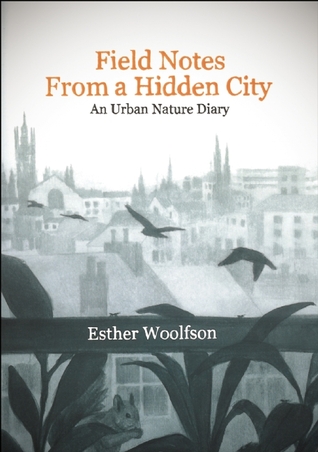Field Notes From a Hidden City: An Urban Nature Diary
- By Esther Woolfson
- Counterpoint
- 368 pp.
- Reviewed by Carrie Madren
- April 10, 2014
The author studies “urban wildlife” in this ode to her Scottish hometown.

When many of us contemplate “getting back to nature” or “enjoying wildlife,” we probably wouldn’t think to hunker down in a city. But that’s what Esther Woolfson does in her latest book, Field Notes From a Hidden City, a journal and yearlong ode to her hometown of Aberdeen, Scotland. In this book, the reader spends a year with Woolfson — from November to November — as she shows us her world and shares her observations of the animals she encounters.
In Field Notes, readers will find musings on the commonplace, the birds and other animals one might expect to see in an urban setting, but American readers may find the names of some animals — corvids, for instance — unfamiliar. Woolfson’s affinity for all types of animals is evident, and she writes about her encounters not only with wildlife (gulls, squirrels, foxes, spiders, magpies, and pigeons), but also with the animals she keeps (and has kept) in her home — a rook, a cockatiel, and so-called “fancy” rats (bred as pets, not the pests she grudgingly calls exterminators to deal with under her house).
Field Notes reads like a diary, with Woolfson sharing slow musings and allowing herself to explore and dwell on tangential ideas. Her approach is descriptive, calm, and insightful — not unlike her unhurried bird-watching strolls by the sea. Because of the writing style here, readers also connect with Woolfson and share in her adventures. The author takes us along as she rescues a young pigeon caught in a snowdrift and nourishes the bird back to health, and we join her rising hope and falling disappointment in trying to glimpse the elusive Northern Lights throughout the year. We see her walking by the sea, the gulls calling overhead, just as easily as we imagine her writing at her desk in a quiet house, overlooking her garden in the cool climes of northern Scotland.
Among the alluring parts of the book are her descriptions of life and culture in the northern latitudes where winter brings harsh cold and long hours of darkness. She describes the deep, gray beauty of her homeland: “Ours is a quiet landscape, a quiet ecology, muted and northern; our bleaching is sea and wind done, sand-worn, impermeable, cold.” She also compares Aberdeen to the tropics and finds a different kind of beauty: “Here, we just don’t need such colour. We need to blend unnoticeably with stone and grass, or sea.”
In addition to patiently observing birds and animals in her garden, Woolfson studies the intersection of humans and animals living in close proximity and asks us to consider how “wild” and “urban” may not be so mutually exclusive after all. Her field notes include research, literary references, history, and philosophical questions. After reading a newspaper clip about a man who desired some grateful reaction from the birds he was feeding, she ponders, “I recognize his feelings and our human need for acknowledgement, love or gratitude, but how did we, as a species, come to want or need a response?”
Intensely poetic prose dominates every journal entry, even at times overpowering her point or storyline. Woolfson extends this poetic prose to her appreciation for all animals, including the slug, which moves “strangely majestically, nakedly, its glistening body alarmingly open and vulnerable.” This thoughtful, lyrical writing allow readers to view this landscape through her perspective: “Like an echo of snow, crack-shots of hail blew in volleys against the glass and slate in June.”
Many of her musings start with an observation and wind through long trains of thought to real environmental or biological issues of the day. In a section on sparrows, Woolfson begins to think about extinction and the loss we experience when a species dies out: “Without a species, we lose not only it but its history, its mirror in our own. We lose connections and while we may in the future read the words, we’ll understand them less. A thread through time will be gone, another reminder of our long lives on this earth together.”
Throughout the journal, Woolfson draws on a deep nostalgia and affection for her city and its history, as well as for the creatures abundant and scarce. Contemplative readers will enjoy her firsthand accounts of raising birds and rats in her home and her narratives describing field trips around town — including bird-rescue missions. Stick with her through all four seasons, and you’ll begin to see many types of urban wildlife — even slugs, pigeons, and spiders — in a new light.
Carrie Madren is a freelance journalist based in Northern Virginia.

